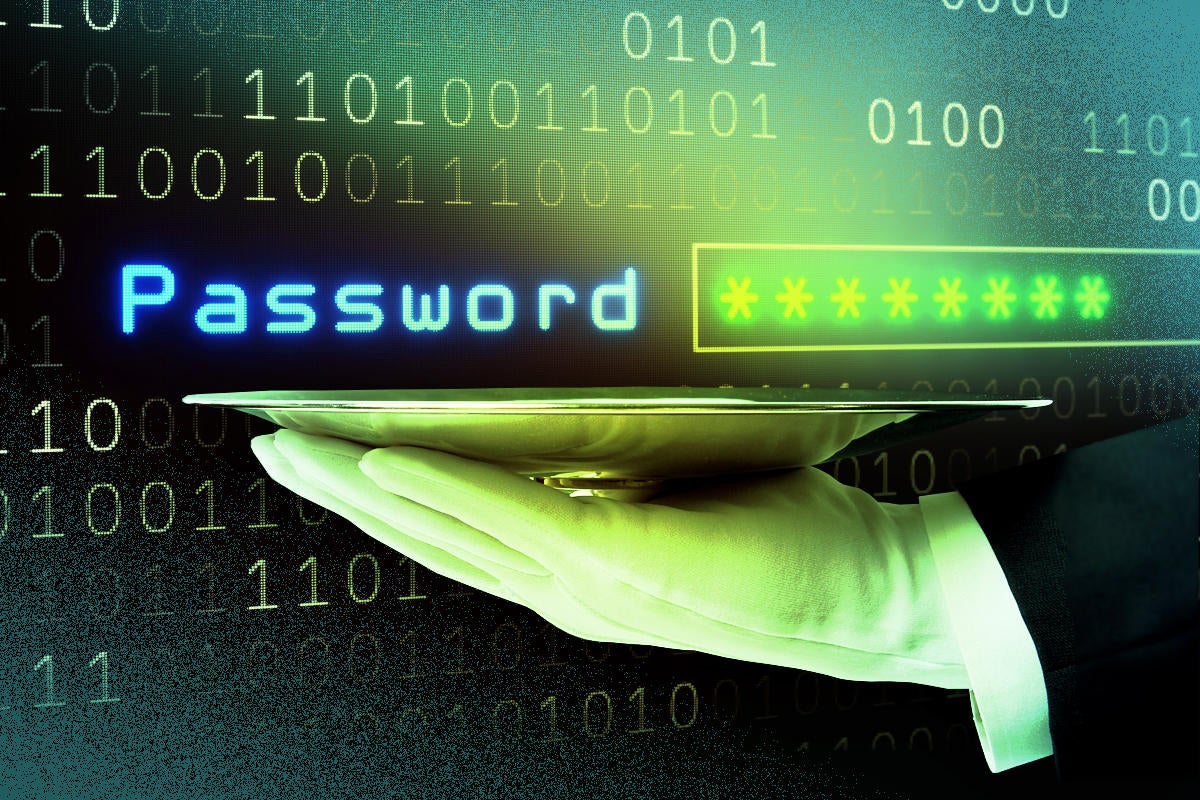Internet of the Senses is on the horizon, thanks to AR and VR

While smell cannot be conveyed digitally, that will change, with smell becoming an online experience by 2030, the report found. More than half (56%) of respondents said technology would evolve to the point that they would be able to smell scents in films. This same application will be applied to sales as retailers market products commercially with smell, the report found, meaning perfume commercials could emit a scent. Along the same lines as smell, humans will also be able to experience taste through devices, according to the report. Nearly 45% of respondents believe that in the next 10 years, a device could exist that digitally enhances the food someone eats. This advancement could have significant impacts on health and diet, allowing people to eat healthier foods that taste more savory than they are. This application presents another opportunity for marketing retail, as consumers could taste food products. People viewing cooking programs could even taste the food that is on screen, the report found. More than half (63%) of respondents said smartphone users would be able to feel the shape and texture of digital icons.
4 Authentication Use Cases: Which Protocol To Use?

Where strong security is a requirement, SAML is generally a good choice. All aspects of the exchange between the RP and IdP can be digitally signed and verified by both parties. This provides high assurance that each party is communicating with the correct counterpart and not an imposter. In addition, the assertion from the IdP may be encrypted, so that HTTPS is not the only protection against attackers accessing users’ data. To add further security, signing and encryption keys may be rotated regularly. To take OIDC to the same level of security requires extra cryptographic keys, as in Open Banking extensions, and this can be relatively onerous to set up and maintain. However, OIDC benefits from the use of JSON and the simpler use by mobile apps, compared to SAML. ... Here, the preference will be for OIDC, as it is likely that a variety of devices, some not browser-based, might be involved, which normally rules out SAML. The built-in consent associated with OIDC enhances the privacy aspects of the data sharing. In addition, the use of signing and encryption may be used to strengthen the security aspects to a degree that adequately meets the requirements of handling such data.
Predictions for AI and ML in 2020

The digital skills gap present within workforces has meant that employees are unsure about how to unleash AI’s full potential. But according to SnapLogic CTO, Craig Stewart, this problem could take a step towards being solved next year. “Transparency remains a hot topic and will continue into 2020 as companies aim to ensure transparency, visibility, and trust of AI and AI-assisted decisions,” said Stewart. “We’ll see further development and expansion of the ‘explainable AI movement,’ and efforts like it. ... Even though there are aforementioned worries regarding AI and ML possibly replacing human workers, some experts in digital innovation believe that the gradual inclusion of the technology will end up being a much more collaborative process. “Despite fears that it will replace human employees, in 2020 AI and machine learning will increasingly be used to aid and augment them,” said Felix Gerdes, Insight UK‘s director of digital innovation services. “For instance, customer service workers need to be certain they are giving customers the right advice.
The Future of Spring Cloud's Hystrix Project

Spring Cloud Hystrix Project was built as a wrapper on top of the Netflix Hystrix library. Since then, It has been adopted by many enterprises and developers to implement the Circuit Breaker pattern. In November 2018 when Netflix announced that they are putting this project into maintenance mode, it prompted Spring Cloud to announce the same. Since then, no further enhancements are happening in this Netflix library. In SpringOne 2019, Spring announced that Hystrix Dashboard will be removed from Spring Cloud 3.1 version which makes it officially dead. As the Circuit Breaker pattern has been advertised so heavily, many developers have either used it or want to use it, and now need a replacement. Resilience4j has been introduced to fulfill this gap and provide a migration path for Hystrix users. Resilience4j has been inspired by Netflix Hystrix but is designed for Java 8 and functional programming. It is lightweight compared to Hystrix as it has the Vavr library as its only dependency. Netflix Hystrix, by contrast, has a dependency on Archaius which has several other external library dependencies such as Guava and Apache Commons.
Dubai’s Kentech kicks off digital transformation drive

“Kentech has suffered with poor IT adoption partnerships in the past, so we needed something that was world-class. We wanted something that our business would love and use.” Kentech launched its tendering process early this year and by July it had selected Oracle as its cloud partner. “During the tendering process, we found that our business was closely aligned to construction,” said O’Gara. “Some of our requirements were quite complex, especially when dealing with reimbursable and fixed-price work – they can chop and change on a daily basis. We found that Oracle could meet those complex requirements. “For us, it was the ERP and budgeting models that were the differentiator. We’ve now started implementation and we’re going to go live at the end of this year with the first phase. We’re a project-based business, so we need to be able to scale up and down very quickly. The cloud model suits us perfectly as a business because we can be flexible, rather than going all out and saying ‘I need 10 more servers’.”
Hybrid multi-cloud a must for banks
Banks operating under a hybrid multi-cloud model predictably and optimally manage finances as cost models shift from fixed to variable. Storing data on site with traditional facilities is expensive and holds banks in long-term contracts for a set amount of data storage. Banks over-resource infrastructure and storage leading to payment of unnecessary resources. Hybrid cloud models allow banks to scale as needed, purchasing only what is immediately utilised using a subscription-based model offered by most CSPs. Procurement and implementation in the traditional way is slow and thus capacity management and a degree of guessing are used, resulting in over-capitalised systems offering little ROI. As the cloud allows for scaling on a pay-as-you-go model, the spend is greatly optimised. For example, UBS’s risk management platform is powered by Microsoft Azure, saving the financial service company 40 percent on infrastructure costs, increasing calculation times by 100 percent, and gaining near infinite scale.
The 10 Best Examples Of How Companies Use Artificial Intelligence In Practice

Today, Waymo wants to bring self-driving technology to the world to not only to move people around, but to reduce the number of crashes. Its autonomous vehicles are currently shuttling riders around California in self-driving taxis. Right now, the company can’t charge a fare and a human driver still sits behind the wheel during the pilot program. Google signaled its commitment to deep learning when it acquired DeepMind. Not only did the system learn how to play 49 different Atari games, the AlphaGo program was the first to beat a professional player at the game of Go. Another AI innovation from Google is Google Duplex. Using natural language processing, an AI voice interface can make phone calls and schedule appointments on your behalf. ... Another innovative way Amazon uses artificial intelligence is to ship things to you before you even think about buying it. They collect a lot of data about each person’s buying habits and have such confidence in how the data they collect helps them recommend items to its customers and now predict what they need even before they need it by using predictive analytics.
Verizon kills email accounts of archivists trying to save Yahoo Groups history
According to the Archive Team: "As of 2019-10-16 the directory lists 5,619,351 groups. 2,752,112 of them have been discovered. 1,483,853 (54%) have public message archives with an estimated number of 2.1 billion messages (1,389 messages per group on average so far). 1.8 billion messages (86%) have been archived as of 2018-10-28." Verizon has issued a statement to the group supporting the Archive Team, telling concerned archivists that "the resources needed to maintain historical content from Yahoo Groups pages is cost-prohibitive, as they're largely unused". The telecoms giant also said the people booted from the service had violated its terms of service and suggested the number of users affected was small. "Regarding the 128 people who joined Yahoo Groups with the goal to archive them – are those people from Archiveteam.org? If so, their actions violated our Terms of Service. Because of this violation, we are unable reauthorize them," Verizon said.

Open source refers to an online project that is publicly accessible for anyone to modify and share, as long as they provide attribution to the original developer, reported TechRepublic contributor Jack Wallen in What is open source?. Since its release over 20 years ago, open source has changed the internet. Without open source, the online experience would be "a far different place; much more limited, expensive, less robust, less feature-driven and less scalable. Big name companies would be much less powerful and successful as well in the absence of open source software," wrote Scott Matteson in How to decide if open source or proprietary software solutions are best for your business. ... Major tech companies have set their sights on open source development, with Microsoft's acquisition of GitHub and IBM's acquisition of Red Hat. However, developers are concerned about the impact these tech giants could have on the open source community, the report found. Nearly 41% of respondents said they were concerned about the level of involvement from major tech players in open source. The main concerns they cited involved possible self-serving intentions from big companies, the use of restrictive licenses that give large organizations unfair competitive advantage, and overall trust of large corporations, the report found.
Is cloud migration iterative or waterfall?

Cloud migration projects have two dimensions. First, they are short-term sprints where a project team migrates a handful of application workloads and data stores to a single or multicloud. They act independently, with little architectural oversite or governance, and last between two to six months. Second, is the longer-term architecture including security, governance, management, and monitoring. This may be directed by a cloud business office, the office of the CTO, or a master cloud architect. This set of processes goes on continuously. Here is the problem. The former seems to overshadow the latter, meaning that we’re moving to the cloud using ad hoc and decoupled sprints, all with little regard for common security and governance layers and any sort of management and monitoring. The result is something we’ve talked about here before: complexity. Although we built something that seems to work, applications migrated from one platform to another are deployed with different technology stacks.
Quote for the day:
"Without growth, organizations struggle to add talented people. Without talented people, organizations struggle to grow." -- Ray Attiyah
No comments:
Post a Comment